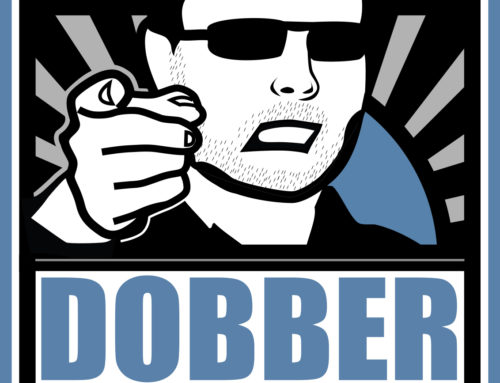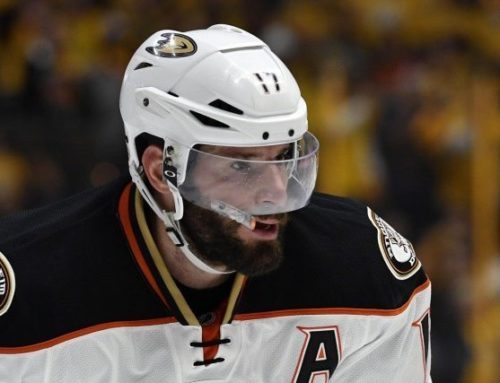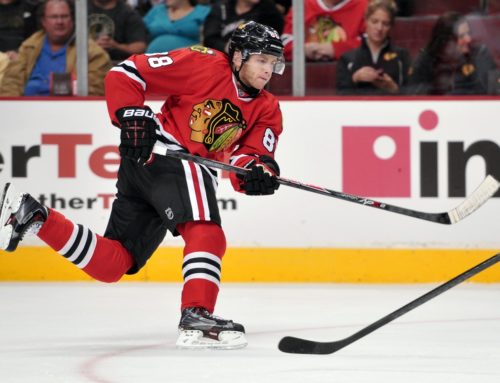The Business of Fantasy Hockey Part IV – The Power of Influence
Jeff Angus
2010-09-14

The first three parts the Business of Fantasy Hockey series focused on engaging in a passive analysis of fantasy hockey leagues, the concept of market value, and how to properly value player intrinsically. Part IV, we’re going to explain how you can actively manipulate the market price of players for trading and drafting (or any other way you can improve your club).
Today’s Topic: The Power of Influence
Part III – The Psychology of Crowds
The discussion for this column will be focused on psychology and the major referenced source is a phenomenal book titled "Influence: The Psychology of Persuasion" by Robert Cialdini. Both Mike and myself have read this book numerous times, and it is a valuable tool for anyone who interacts with people on a daily basis (which is essentially everyone).
In fantasy hockey, many times you may find yourself overwhelmed with information and struggling to compare or value certain players. The first three parts of this series of our series suggested ideas on how to minimize this problem or issue, and it is one faced by almost all poolies.
In Cialdini’s book, he makes the argument that when humans are faced with too much information, they often fall back on certain pre-programmed responses. These responses develop because they provide a way to react to tough situations and make decisions with limited time to work with. In many situations the responses are beneficial, but Cialdini explains that marketers constantly exploit these pre-programmed reactions and use them against us.
When it comes to making a trade in fantasy hockey, you must assume the part-time role of marketer. You need to convince your fellow poolies that you possess the assets to improve their team. This is easier said than done, as most will be skeptical of the value of a player you are actively trying to get rid of (the last thing many of us want to read is an e-mail or note from a competitor where he heaps praises on the same two or three players he has been trying to dump on you over and over again).
This is also difficult to pull off on a continuous basis, especially if you develop a reputation as a shrewd trader. I find it very difficult to trade in three of my four leagues, as most of my competition immediately believes they are getting the short end of the stick in terms of a trade return (it turns out that I am in fact sometimes wrong…). Yet I still find ways to improve my teams via trade year after year, mostly due to the ideas discussed in this book.
In Influence, Cialdini touches on six psychological tendencies that shape our impulse to comply. Here are three you can use in fantasy hockey to land that prized possession you desire.
Reciprocation (the old give and take… and take)
The rule of reciprocity says that people are much more likely to comply with the requests of those who have provided them with something first. In order to apply this to fantasy hockey you’ll need to get creative.
Let’s say you’re watching the Bruins one night this season and notice Tuukka Rask goes down to injury. Naturally you’d check on Tim Thomas’ availability and your own stash of goaltenders, and may decide that adding Thomas is of no real benefit to you. Instead of staying quiet, get in touch with the Rask owner in your league and alert him to the situation. Even a small gesture of decency could save Mr. Rask owner’s season, and will ensure he is indebted to you. Not only will this competitor probably be more willing to alert you when you lose a star player to injury goes down on your team, but he’ll be searching for ways to repay you even if that means accepting your lopsided trade.
Sound bogus? Cialdini tested his hypothesis by sending holiday cards to a random group of people he had never met before. He was shocked to find that a great majority of the strangers sent him a card back, despite not even knowing who he was. With the rule of reciprocity, we are obligated to future repayment of gifts, favors, and help. It’s an automatic response that is not easily controlled.
We’ve gone so far as accepting a smaller trade offer that we weren’t overly thrilled about, with the hopes that it would open the door for a much bigger trade down the road. Invariably it always works because of the goodwill associated with accepting the other person’s offer. I have done this before on numerous occasions, and I had had a chuckle when I read this part of the book – exactly what I had been unknowingly doing for years put into clear and concise words (this would happen time and time again as I continued to read on).
A simple example Cialdini uses in his book is that of a boy scout asking random people for a $10 donation. If the people refused, he would then change his demand and ask them to purchase a single chocolate bar instead. An overwhelming number of people bought a chocolate bar, as it cost only $1 and seemed like an attractive option. The people felt good about themselves for two reasons – they were still helping the boy scout, and they didn't have to spend $10 to do it.
This idea can even be used in the midst of a single trade negotiation. When you initiate trade talks with another team, you should always focus on never making your first offer your best. Start with an offer that allows you room to “give in” and move towards common ground. The action will often be repaid by your trading partner. (You do need to be careful with how often you utilize this idea though. If you get a reputation for never making a serious initial offer, it could backfire and ruin your legitimacy.)
Social Proof
The rule of social proof is based on the thought that people are more willing to take a recommended action if they see others are doing the same – the herd mentality. In drafts, an example of this theory in action is commonly referred to as the “run on goalies” or any other position. When a handful of teams select a goalie too early in your draft, you always see three or four teams immediately do the same. They don’t want to be left out and don’t want to differ from the crowd. You can read more handling the "Psychology of Crowds" in Part III.
This is also a large part of our buy-low, sell-high idea discussed in Part II on Intrinsic Value. When a player is on a hot streak, announcers will be commenting about it, articles will be written about him, and your competitors will be trying to acquire him. People don’t want to stand out from the crowd and naturally assume that if ten people like a certain player, they must be right. Use this to your advantage.
Get multiple teams involved in trade talks, even if a few are just testing the waters. If four owners are supposedly in pursuit of your defenseman, his value will automatically go up. Brian Burke is the master of this propaganda in the real-life NHL. Ten teams after Kaberle?. Ten teams in on Ponikarovsky? When has he ever only had one team in pursuit of his players? No one wants to be left out and you can easily pit teams in your league against each other in the same way to create a bidding war.
One trick I have used over the years is to target players expected to stand out at the World Junior Championships. Young players who star in this tournament tend to get overhyped, and there is always some element of risk inherent in players who have yet to play in the NHL compared to those who have already made it to the big league. In this case, social proof works as a tactic because the overwhelming majority of people tune in and watch the tournament, and they get ideas and opinions on young prospects shaped and created at the same time and in the same way. It's pretty easy to find a trading partner if you are looking to move a prospect who just had a very successful tournament (especially if you target a competitor who is rebuilding). More on this technique can be found by reading this column I wrote last November (The World Juniors – Time to Sell High).
Scarcity
The scarcity tendency is an extension of the social proof idea. Cialdini says “opportunities seem more valuable to us when their availability is limited.” People find players more attractive to the degree that they are scarce or rare. If a comparable player can be added from the waiver wire, there’s no reason an owner would sacrifice assets to make a trade with you. If a player will be available for the next few months, there will be no urgency for another owner to make a trade today. By creating a feeling of scarcity around your players, others may go to great lengths to acquire them.
Highlight and focus on the positive aspects of the player you’re trying to trade away and create this feeling of scarcity around them. Look at what your opponents need and focus on what you can provide to solve these issues. Maybe it’s plus/minus. Sure Pavel Datsyuk had a down year, but Detroit should improve and he always put up an excellent plus/minus.
Meanwhile, you’re ignoring the fact that he’s 32, offers no help in the penalty minute department, and may never repeat his 97 point production. The owner needs plus/minus so badly that he may ignore these faults for the easy category fix.
Another way to do this is to draft both goalies from the same team, or to take more defenseman than you need, knowing that a competitor or two will be desperate for a blue liner. This rule assumes that you know a lot about your competition, a thought that underlines this entire four-part series. By knowing how your competitors tick, you can set the market price for assets they require or are interested in.
Cialdini's book has several other weapons of influence – the 'liking' factor (getting people to like you before engaging in business or interacting with them), commitment and consistency, and authority. I'd recommend the book to everyone. It's entertaining, eye-opening, and very applicable to daily life.
As we mentioned throughout, you must be careful with how actively you pursue these strategies. Once you’ve developed a reputation as a sensationalist it can take years to rid yourself of that label. Fantasy hockey is not just about managing players, but it’s about managing the personalities of the owners in your league. If you put these ideas to work effectively, you will be an infinitely better poolie.
Mike Colligan is an NHL analyst at The Hockey Writers and Forbes.com SportsMoney. He graduated with a degree in Business Administration and in his free time pursues interests in stocks, investing, hockey, and now the intersection of all three. You can check out more of his work at here or follow him on Twitter.





 BUF
BUF N.J
N.J PHI
PHI MIN
MIN VAN
VAN FLA
FLA TOR
TOR CGY
CGY S.J
S.J